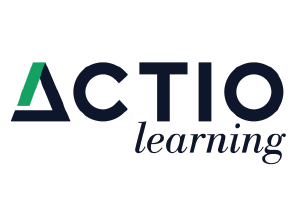Change is at the heart of learning and development (L&D). Given our dependence on technology and new ways of thinking about learning, we constantly need to manage change. As a 20-plus-year L&D veteran, I’ve seen laserdisc and CD training come and go. When I began my career, online training was far from ubiquitous, and we had to accommodate 256k bandwidths until high-speed internet opened the door to multimedia and other upgrades.
Typically, as L&D professionals, we are presented with a challenge to the status quo and then recommend how to better align with an organization’s mission, goals and initiatives. Our mission is to help others change their behavior, improve their aptitude and safety, and comply with policies and laws.
Training Is Essential to Effective Change Management
Most experts view training as essential to effective change management, just below the need for open and honest communication. Often, structural change happens due to mergers and acquisitions, skill gaps, poor compliance, erratic safety, new products and services, and wholesale culture improvement. Well-designed training can help create positive change in each of these areas.
Change After an M&A
When companies merge, for example, it’s vital that everyone undertake and complete tasks in a uniform way, including deciding which processes to keep and how to handle cybersecurity and other essential business functions. The combined company often comes with competing learning management systems (LMSs), instructional design styles and course development expertise. It either creates a single L&D function or keeps separate teams. Often, the company will hire an L&D consultant to recommend the best way forward.
Changes Among Training Providers
Once, most training companies had a proprietary course authoring tool and depended on slide decks and speaker notes. Today, we need to master an array of instructional design approaches and development tools. Once, an LMS was merely a course launcher. Today, learning platforms may encompass social feeds, live events, knowledge and skill assessments, learning plans, leader boards, and advanced reporting capabilities (such as experience API, or xAPI). We’ve had to identify our skill gaps and the gaps of our customers and train accordingly, or we are called upon to help an organization upskill or cross-train its people because of capability gaps, new regulations, or new procedures and tools.
Changes in Compliance
Sometimes, an organization must beef up its compliance training after misconduct causes damage to employees and the business. For example, more and more states now mandate anti-harassment training to help workers identify and address unacceptable conduct. I once worked for a global money transfer business that did not have robust anti-money laundering training until it became part of a major settlement that included a $500 million fine. Why wait for that sort of change before realizing training’s role in risk management?
Other Ways Training Can Support Change
Organizations can often strengthen change management by incorporating other skill training. For example, training on communication, interpersonal relations, fostering respect, diversity and inclusion, managing oneself and others, negotiating, problem-solving, and decision-making can contribute to successful change management. Further, training promotes employee engagement by demonstrating an organization’s commitment to helping its people survive change and making them part of the process.
Change in 2020
Consider the many changes the past year has brought us. Who would have thought that most of us would be isolated at home for months and months while the world tried to stem a pandemic? Who would have thought that we could get used to three or four standard meals and endless TV binging? Many of us wear the same clothes day after day, homeschool our kids, worry about loved ones and friends’ health, and find ourselves suddenly working remotely — and these changes don’t touch upheavals in the economy, politics, retail and entertainment.
Change is all around us and always will be, but as L&D professionals, we can help manage organizational change — it’s what we’re here for!






